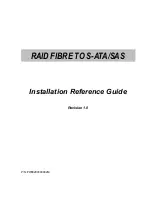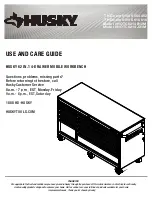
Introduction
1-6
RAID 3
sector-stripes data across groups of drives, but one drive in the group is
dedicated to storing parity information. RAID 3 relies on the embedded ECC in
each sector for error detection. In the case of drive failure, data recovery is
accomplished by calculating the exclusive OR (XOR) of the information recorded
on the remaining drives. Records typically span all drives, which optimizes the
disk transfer rate. Because each I/O request accesses every drive in the array,
RAID 3 arrays can satisfy only one I/O request at a time. RAID 3 delivers the
best performance for single-user, single-tasking environments with long records.
Synchronized-spindle drives are required for RAID 3 arrays in order to avoid
performance degradation with short records. RAID 5 arrays with small stripes
can yield similar performance to RAID 3 arrays.
Under
RAID 5
parity information is distributed across all the drives. Since there
is no dedicated parity drive, all drives contain data and read operations can be
overlapped on every drive in the array. Write operations will typically access one
data drive and one parity drive. However, because different records store their
parity on different drives, write operations can usually be overlapped.
Summary of Contents for MGD-16FC16S
Page 1: ...RAID FIBRE TO S ATA SAS Installation Reference Guide Revision 1 0 P N PW0020000000263...
Page 40: ...Configuring 3 4 5 Click disconnect button 6 Open the File menu and then open Properties...
Page 57: ...Configuring 3 21...
Page 60: ...Configuring 3 24 Note Cannot expand RaidSet when contains Raid30 50 60 volume...
Page 71: ...Configuring 3 35 Note Cannot expand volume capacity in Raid30 50 60 volume...
Page 89: ...Configuring 3 53...













































